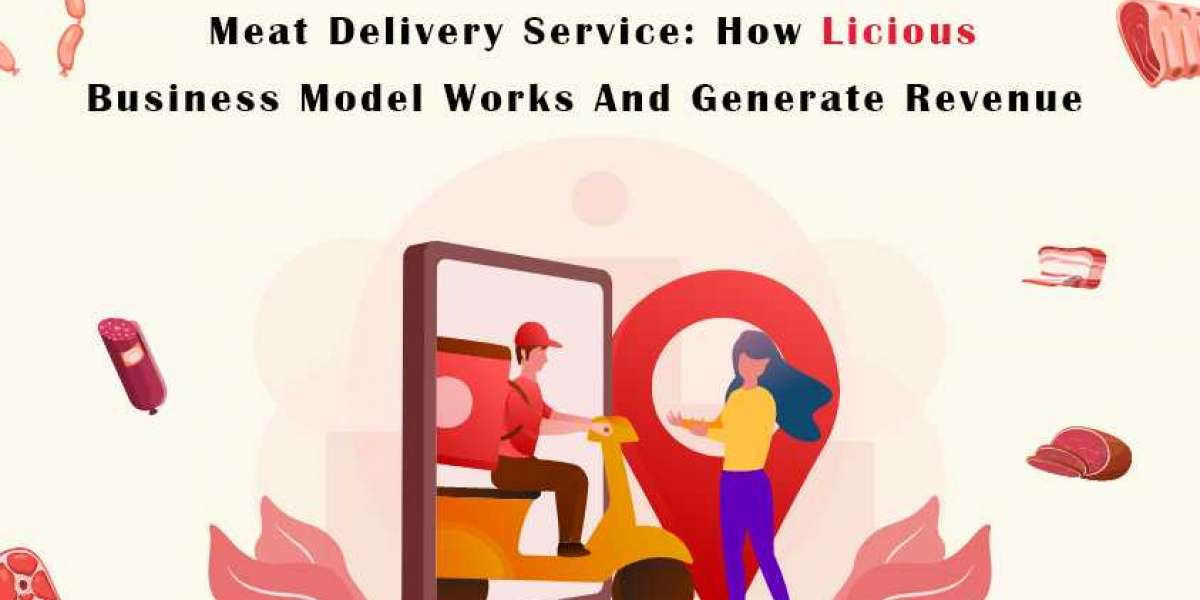In a world where convenience is king, there are a ton of opportunities in the meat delivery business. Due to hectic schedules and a growing desire for hassle-free online ordering, more and more people are ordering premium quality meats online and having them delivered right to their homes.
Licious is leading the way in this culinary revolution, a brand known for its superior quality and convenient delivery right to your door. Being among the first in the meat delivery industry, Licious has made a name for herself and served as an inspiration to other fellow entrepreneurs.
Aspiring business owners wishing to enter the booming meat delivery service market can find guidance from Licious thanks to its creative business model and steadfast dedication to quality. Come along as we examine Licious's success pattern and interesting business and revenue model for those ready to forge their own route in this prosperous field.
Let's get started.
What is Licious?
Bengaluru is home to the meat and seafood company Licious.
The company offers the best, freshest, and cleanest fish, poultry, meat, and eggs online. Using a farm-to-fork business model, Licious asserts ownership of the cold chain and the entire back-end production network. On their app, there is an additional section dedicated to recipes. It helps customers prepare delectable meals.
Among other locations, it may be found in Bangalore, Hyderabad, Delhi-NCR, Chandigarh, Mumbai, Pune, Chennai, Coimbatore, Pondicherry, Jaipur, Kochi, Vizag, Kolkata, and Vijayawada.
Licious Company Highlights
Licious revolutionized how we purchase fresh meat and seafood online in a society that values convenience.
Regarding perishables, quality matters; Licious is aware of this. They can preserve the highest caliber by purchasing straight from farms and fishermen. Customers who value this superior quality are prepared to pay more, constituting much of Licious's income.
Company Name: Licious
Industry: Retail
Founders: Vivek Gupta, Abhay Hanjura
Established: 2015
Headquarters: Bangalore, India
Area Served: Indian Metropolitan Cities
Parent Company: Delightful Gourmet Pvt. Ltd.
Services: Online meat delivery
Website: https://www.licious.in/
Licious Success Timeline
Since its launch, Licious, India's top online meat delivery brand, has experienced incredible growth. Let's travel through Licious's victories chronologically:
- 2015- Abhay Hanjura and Vivek Gupta started Licious 2015 to transform India's meat sector.
- 2016 - Licious extended its operations to additional major Indian cities, such as Hyderabad, Delhi NCR, and Mumbai, in less than a year.
- From 2017 to 2019: Licious grew quickly and expanded throughout this time, becoming the premium meat destination of choice for urban customers.
- 2020-To meet the spike in demand for online meat delivery services, Licious intensified its digital transformation activities in response to the COVID-19 epidemic, improving its online platform and fortifying its supply chain.
- In 2021, the business expanded its product line to include organic and antibiotic-free meats and eco-friendly packaging solutions in response to consumer demand for more ethically and healthfully sourced food options.
- In 2022, Licious made history by announcing its intention to launch an initial public offering (IPO), indicating its goal to grow its business and reach more people in India.
Licious has pioneered a new generation of entrepreneurship in the food business and set the standard for excellence in online meat delivery by staying true to its fundamental values of quality, transparency, and innovation throughout its journey.
Licious Business Model: Everything You Need to Know
Pioneering the online meat delivery space, Licious has enthralled customers with its unique business approach that puts quality, convenience, and client happiness first. To find out what makes Licious unique, let's examine the nuances of its business model:
Customer Segment
Licious primarily caters to urban clients who place a high priority on quality and convenience when buying meat. Its target market comprises young families, working professionals, and food lovers looking for premium meats delivered to their houses.
Value Proposition
The three main pillars of Licious' value proposition are as follows:
- Quality: Licious complies with strict quality requirements to guarantee freshness and hygiene and sources its meats from reliable local farmers and suppliers.
- Convenience: Licious allows clients to order premium meats with only a few clicks, negating the need for travel to the butcher shop, thanks to its user-friendly online platform and effective delivery service.
- Variety: Licious caters to culinary preferences and dietary concerns with various items, including fresh meats, marinated meats, ready-to-cook meals, and seafood.
Key Resources
- Supply Chain: Licious has established a strong network of suppliers that allow it to purchase premium meats directly from nearby farmers and wholesalers, guaranteeing freshness and traceability.
- Technology: Licious uses data analytics for inventory management, consumer insights, and its web platform for easy ordering and delivery tracking. These technologies are used to optimize business operations.
Licious has established a robust reputation for excellence and dependability, garnering the faith and allegiance of its clientele by consistently providing high-quality products and outstanding customer support.
Costing Structure
Licious bears expenses associated with meat sourcing and procurement, infrastructure for technology, marketing and advertising, operations, and logistics. To assure profitability, the company continues streamlining its cost structure while upholding its dedication to quality and client happiness.
In a nutshell, Licious's business model centres on providing customers with excellent meats at unparalleled convenience and service. It does this by utilizing innovation and technology to add value for its clients and foster long-term growth in the cutthroat online meat delivery sector.
How Does Licious Make Money?
Licious primarily generates revenue from the sale of its premium meat products. Customers pay for the meats they choose and any supplemental goods like marinated meats or seafood when they place orders through the Licious website or app. Licious determines product prices by considering market demand, sourcing, and quality variables.
Furthermore, Licious might make money by offering value-added services like quick delivery choices or subscription-based business plans. Licious receives revenue from customers who choose to subscribe to regular meat deliveries or select speedier delivery; these customers may also pay additional fees or set up recurring payments.
In general, Licious's business model is centred on offering clients high-quality meats and practical delivery choices while making money from product sales and other services.
How Much Does It Cost to Develop a Meat Delivery App Like Licious?
For entrepreneurs inspired by Licious's successful business model and eager to enter the meat delivery market with their own app, the question of development costs inevitably arises.
While Licious has set a high standard for quality and convenience in the industry, the cost of developing a similar meat delivery app can vary significantly depending on several factors.
- Firstly, the features and complexity of the app play a crucial role in determining development costs.
- Secondly, the location of the app's target market can also influence development costs. Factors such as local regulations, language support, and regional preferences may require customization, impacting the overall cost of development.
- In addition, the app's design and user experience should be taken into account.
- Although it might necessitate a larger investment in design resources, a visually appealing and intuitive design can improve the user experience and increase engagement.
Custom development can be more flexible and provide tailored solutions, but it can be more expensive and take longer. Using app development platforms or choosing a readymade or white-label solution can be more affordable options for entrepreneurs that want to construct their meat delivery app rapidly and at a low cost.
If you are one of those who want to enter the lucrative meat delivery market with a fully functional meat delivery app, contact us. We will help you develop emerging solutions in no time.







